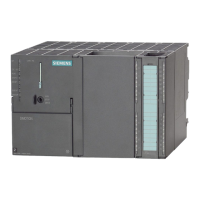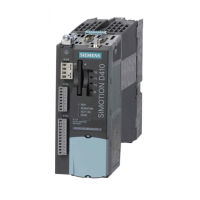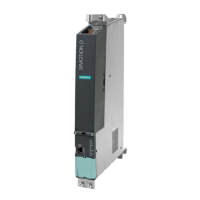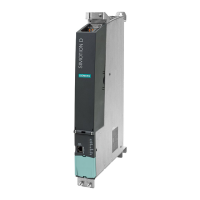Basics of Path Interpolation
2.8 Path behavior at motion end
TO Path Interpolation
36 Function Manual, 11/2010
The _stopPath() command can be used to define the dynamic response during deceleration.
If the braking dynamic in the _stopPath() command is smaller than the braking dynamic in
the active motion command, faults can occur in some situations.
If the dynamic response defined in the _stopPath() command in the previously defined path
segments (i.e. in the path segment of the active command or in the path segment of the
buffered commandPuffer) can be used to stop the path object, the path object will stop with
error.
If the dynamic response defined in the _stopPath() command cannot stop the path object by
the end of the previously defined path, the following can occur:
● The path interpolation is terminated.
● Each axis is delayed using the maximum dynamic response defined in the axis.
● The 50006 error message is generated.
As an example: The following path consists of three motion commands that blend in each
other. This means, if the first command is active, the second command will be placed in the
buffer. If the second command is active, the third command will be placed in the buffer. If the
third command is active, it will be completed.
BPRYH3DWK&LUFXODU
BPRYH3DWK/LQHDU
BPRYH3DWK/LQHDU
BVWRS3DWK
Figure 2-24 Dynamic response for _stopPath()
If _stopPath() with reduced dynamic response is called within the first linear path segment,
the path object will be delayed using the dynamic response defined in the _stopPath()
command. Under some circumstances, the path object stops in the circle section, it remains,
however, on the path profile.
If _stopPath() with reduced dynamic response is called within the second linear path
segment, the path object cannot stop before the end of the defined path. The axes are
delayed with maximum dynamic response, the path profile may possibly by left, the 50006
error will be issued.
2.8 Path behavior at motion end
2.8.1 Path behavior at motion end
If the path dynamics are specified via a velocity profile, the behavior at the motion end is
determined from the dynamics specified in the profile at the path end point.
If the path dynamics are specified via dynamic response parameters, the transition can be
set. In addition to stopping at the command end, two sequential path segments can be linked
together dynamically such that no deceleration is needed.

